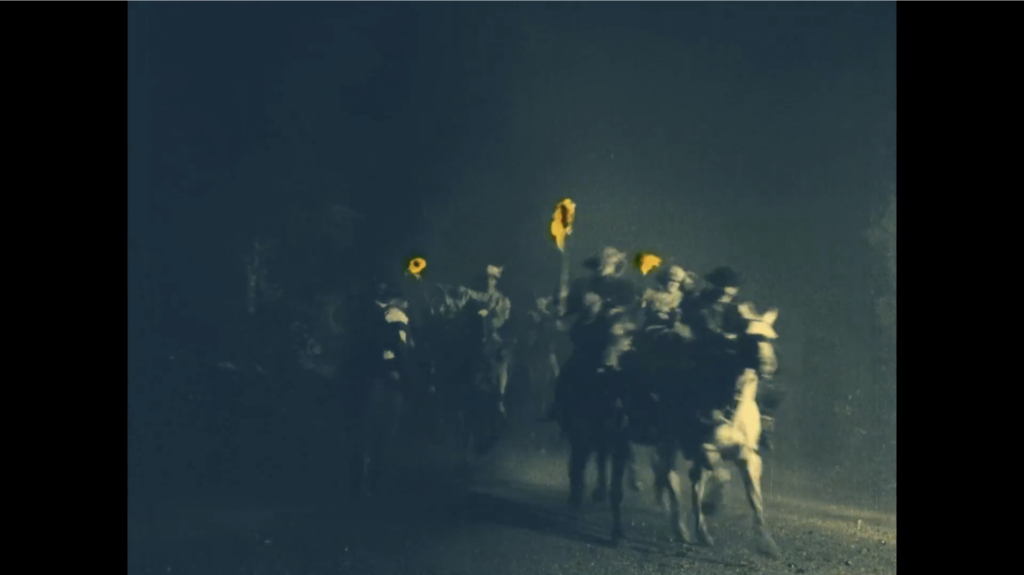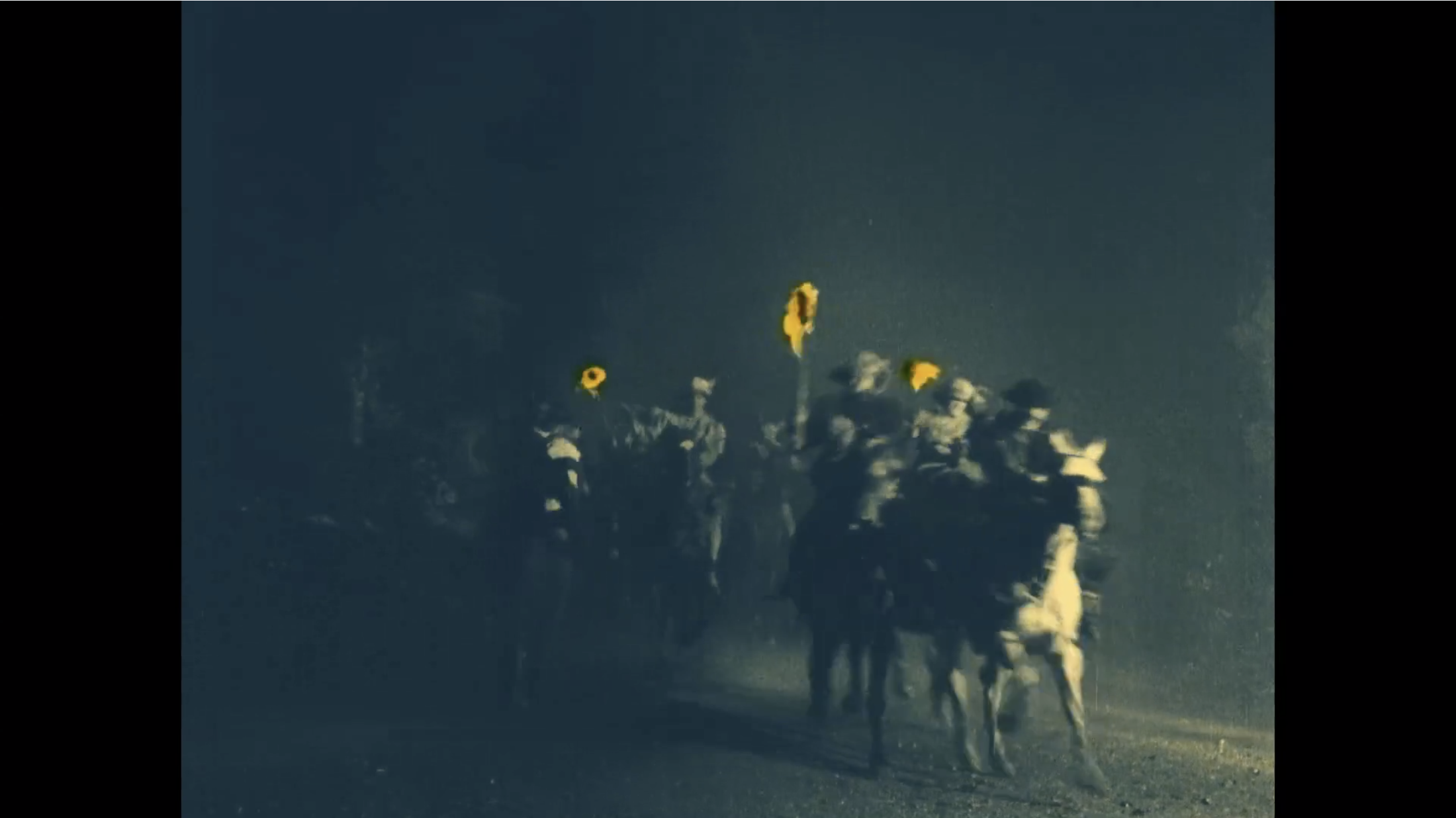A brief coda about Silent Film projection speed(s) before I move on to the next overall topic. And that is the notion of “natural motion”. This is a phrase I have heard invoked when a projection speed has been selected that is slower than a film was originally shown at.
It’s occasionally followed by or backed up with the “running around like the Keystone Kops” phrase.
The thing is, as I’ve been covering in the last several posts, this isn’t really achievable. That is, unless you’re showing home movies, actualities from the turn of the last century or maybe newsreel footage.
Running Silent Film at cranking speed or close to it winds up looking “gooey”, if I may use that word. True, you are seeing the performers at real-time speed, and how it looked on the shooting stages when the cameras were turning. But the reason a silent film still feels “too slow” to people objecting to the slower projection speed, despite the claims of aiming for “natural motion”, is that that actors adjusted their movement and physicality to compensate for the expected-in-cinemas speed-up. And that’s what we’re now witnessing, seeing the film at or near cranking speed. This movement adjusting is borne out by the statements we have, bookending the silent era, from Maurice Costello and from Milton Sills.
What actors et al were doing in adopting “a deliberate tempo” as Sills called it, in the performing for an undercranked camera, was done on purpose in order to achieve the simulation or replication of natural motion for when the films were projected at a faster rate in cinemas. Projection at neither cranking speed nor projection speed (as intended or expected in the year the film was released) really gives you natural motion, but the faster speed — 30-50% up from taking speed — gets you the better (and intended) version of it, since it’s what the actors were aiming for.
Except for one kind of motion, and this is often the “Keystone Kops” gauge that kicks in.
The Keystone Kops too-fast notion comes from an impression set by watching Keystone comedies at 24 fps during a time when variable speed projection or video transfer wasn’t possible. A result of a conflated impression of the films from seeing the Robert Youngson compilation films in theaters and especially on TV.
Silent Film, because it’s run faster than taking speed, allowed (and allows) for the mixing of cranking speeds. Since it’s all running faster than real life, you can cut from a shot taken at 12 to another at 16 to another at 8. Most of Keaton’s One Week is taken at one speed — most probably 16 fps — but the wide shot of the house spinning is (to my eye and brains) around 8 fps. If you take the time to look at the house-spinning sequence you’ll see that the house appears to be turning at different rates in different shots, because they were taken at different speeds.
But, regardless of taking speed, there is something no one can compensate for. It’s running, and the law of gravity.
People running, horses running — you can’t adjust the speed you’re running to compensate, because when you slow down a run it ceases to be running. Especially with horses. It just looks frenetic, no matter what you do.
And gravity is gravity. People and things falling fall at the speed they fall.

What’s interesting, at least to what I’ve seen over many years, is that the shots of people running about and objects large and small falling were never taken at a faster cranking speed to compensate for this. When I was working on the restoration of When Knighthood Was in Flower (1922), I found that while most of the film looks “fine” at one particular speed, all the sequences with people chasing each other on horseback look faster than the rest of the film.
You could certainly make the case for adjusting the playback speed of those scenes to even things out for the DVD/Blu-ray edition. But, I also figured…it’s 1922 and by this point the camera operators knew what people chasing each other around on horse and on foot looked like and, if they wanted it to be in line with the rest of the picture, would have cranked these scenes at 20-22 fps so the movement matched the rest of the film.
But they didn’t. And this isn’t the only film where I’ve seen this. It’s not that uncommon in Silent Film, actually.
The closest thing to “natural motion” in projecting Silent Film is to run the film at the speed it was shown at during its release, to honor the work put into what we’re seeing by the performers and other artisans who worked so hard on these movies decades ago.
I’ll have one more brief post next, about over-cranking in Silent Film, before moving on to tackling the subject of silent movies made after the advent of talking pictures, from 1930 to present.
The first post in this series is here.
The previous post (#55) to this one is here.
The next post (#57) is here.

When you talk about post-1930 silent film, will you include films with synch sound but no dialogue, like THE THIEF?
Yes, to some extent, I’ll discuss “word-less” films like this or the Tati pictures, as opposed to Silent Films.
There is also the matter of shot length as selected by the editor. Showing a film at “natural speed” often results in individual shots that seem to just hang on the screen forever, far longer than needed to convey their purpose. This is just one other factor to support the notion that these films were designed to be shown faster than the speeds at which they were photographed.
Then there’s “City Lights” and “Modern Times.” Chaplin obviously knew they would be projected at 24, but the cranking speed was less than 24 with the sole intention of speeding up the action in projection. Maybe his change of heart on the matter in the 1950s when he had the shorts in “The Chaplin Review” step printed was due to the fact that early silent shorts had received such derisive treatment in 1940s low-budget shorts series like “Flicker Flashbacks” and whatever the parallel Warner Bros series was. Given the fact that the technology of the 1950s only gave him a choice of having the films shown too fast at 24 or too slow at an effective step printed speed of 16, maybe he decided the films would be less damaged by the latter.
What’s interesting about the step-printing Chaplin used is that he opted for repeat-printing every other frame – simulating 16 fps – as opposed to repeating every third frame – which would give you 18.